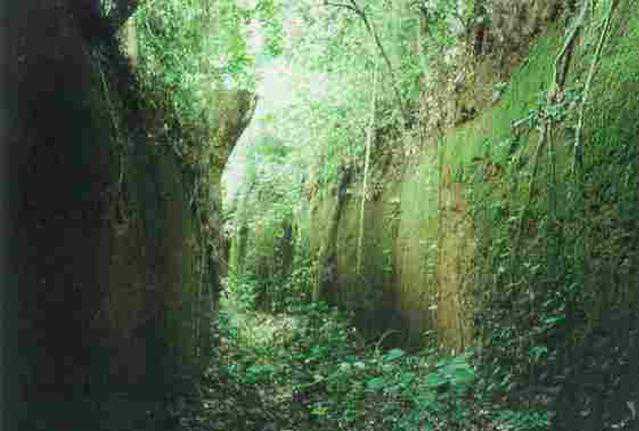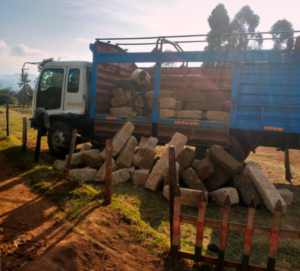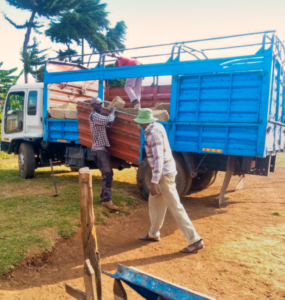The Benin Moat (Iya in the local language) was built as defensive fortification around Benin City during when the kingdom engaged in many wars. The Kingdom was in today’s southern Nigeria and capital was Edo which is known as Benin City today.
Quick facts:
- The Benin walls consisted of combination of ramparts and moats.
- The border distance was 16,000km.
- 6500km² of community was enclosed.
- It’s constructions is estimated to have started as early as 800AD.
- It was finally completed around 1460 AD.
- It was a defensive barrier against invaders.
- The Portuguese explorer visited Benin in 1472 shortly after the wall and the ditch were completed.
- At the time it was considered the world’s largest man made structure. Europeans visitors like Dapper’s travel notes described the Great wall of Benin.
- The Guinness Book of World Records (1974) describes the walls of Benin as the world’s second largest man made structure after China’s Great Wall.
- In terms of length, and series earthen ramparts it surpass China’s Great Wall.
- Fred Pearce wrote in New Scientist :They extend for some 16,000 kilometres in all, in a mosaic of more than 500 interconnected settlement boundaries. They cover 6,500 square kilometres and were all dug by the Edo people. In all, they are four times longer than the Great Wall of China, and consumed a hundred times more material than the Great Pyramid of Cheops. They took an estimated 150 million hours of digging to construct, and are perhaps the largest single archaeological phenomenon on the planet.
Considered one of the greatest wonders of the world, the walls were built of a ditch and dike structures. The ditch was dug to form inner moat and excavated earth from this was used to construct external ramparts. It’s construction method predates the use of modern earth-moving equipment or technology.
Oba Oguola (1280-1295) completed 1st and 2nd moats. Ewuare the Great (1440-1473) added an 3200km extension of the moat in the 15th century. The whole enclosure allowed entry to the city with nine controlled gates. At night the gates were locked.
How it worked as defensive fortification
The moats were heavily guarded around the clock, as lines of defence, they stopped invaders as they could be seen trying to go through, they were either captured or killed, by Benin solders.
The steep banks of earth stopped invaders from climbing over as they could be buried in sand. In addition, the walls were high which discouraged the attackers from climbing through.
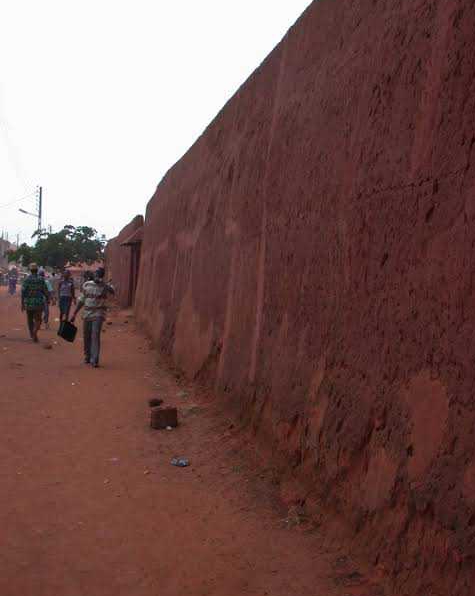
The outer walls which were very high provided a thick shield around the city. The nine gates restricted access to the city.
The capital city of kingdom was bordered by inner wall, which was ten kilometres long, the most important parts like the Royal Palace and Chiefs houses were protected by this inner wall.
Outside the wall was a ditch deep and wide as the wall. Travellers bringing goods into the city were allowed in after paying toll.
For visitors seeking to see King, it took several days for them to see him. For some traders it was far convenient to conduct their trade outside of the city an city borders.
Security was assured for Benin people during that period of trans-Atlantic slave trade and constant wars of territorial expansions by other kingdoms. As summarised by the Portuguese ship captain Lorenzo Pinto, visiting in 1674, “Great Benin, where the King resides, is larger than Lisbon; all the streets run straight as far as the eye can see. The houses are large, especially that of the King, which is richly decorated and has fine columns. The city is wealthy and industrious. It is so well organised that theft is unknown and people live in such security that they have no doors to their houses.”
In 1897 during when colonialism was at heights, the walls were ravaged by the British which came to be known as the Punitive expedition. Scattered pieces of the structure remains in Edo, with most of them being used by the locals for building purposes.
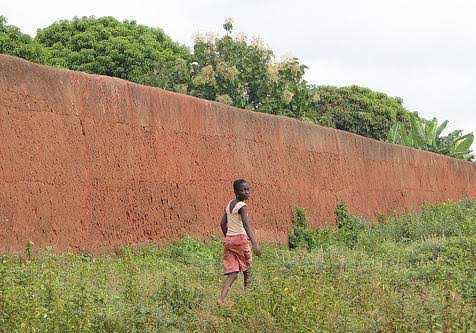
Read more about Great Wall of Benin from National Geographic, about the type of soil used read here. For added information read here and Wikipedia.

